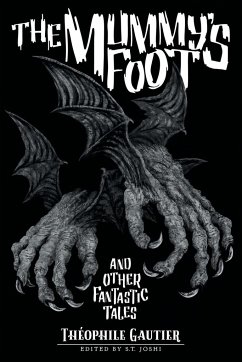This volume gathers the weird and fantastic tales of Théophile Gautier (1811-1872), a pioneering French author whose weird work includes such distinctive tales as the Egyptian fantasies "One of Cleopatra's Nights" and "The Mummy's Foot," the classic vampire story "Clarimonde," and an entrancing novella of psychic transference, "Avatar." Gautier's tales feature a haunting fusion of eroticism and weirdness, in consonance with his view that the human female constituted the most exalted form of beauty in all creation. The evocative translations of Lafcadio Hearn and Edgar Saltus have been used in this volume. The Classics of Gothic Horror series seeks to reprint novels and stories from the leading writers of weird fiction over the past two centuries or more. Ever since the Gothic novels of the late 18th century, weird fiction has been a slender but provocative contribution to weird fiction. Edgar Allan Poe, Ambrose Bierce, the Victorian ghost story writers, the "titans" of the early twentieth century (Arthur Machen, Algernon Blackwood, Lord Dunsany, M. R. James, H. P. Lovecraft), the Weird Tales writers, and many others contributed to the development and enrichment of weird fiction as a literary genre, and their work deserves to be enshrined in comprehensive, textually accurate editions. S. T. Joshi, a leading authority on weird fiction, has done exactly that in establishing this series. Using scholarly resources honed over decades of wide-ranging research, he has assembled volumes featuring not only the complete weird writings of the authors in question, but exhaustive bio-critical introductions and bibliographical data.
Hinweis: Dieser Artikel kann nur an eine deutsche Lieferadresse ausgeliefert werden.
Hinweis: Dieser Artikel kann nur an eine deutsche Lieferadresse ausgeliefert werden.








